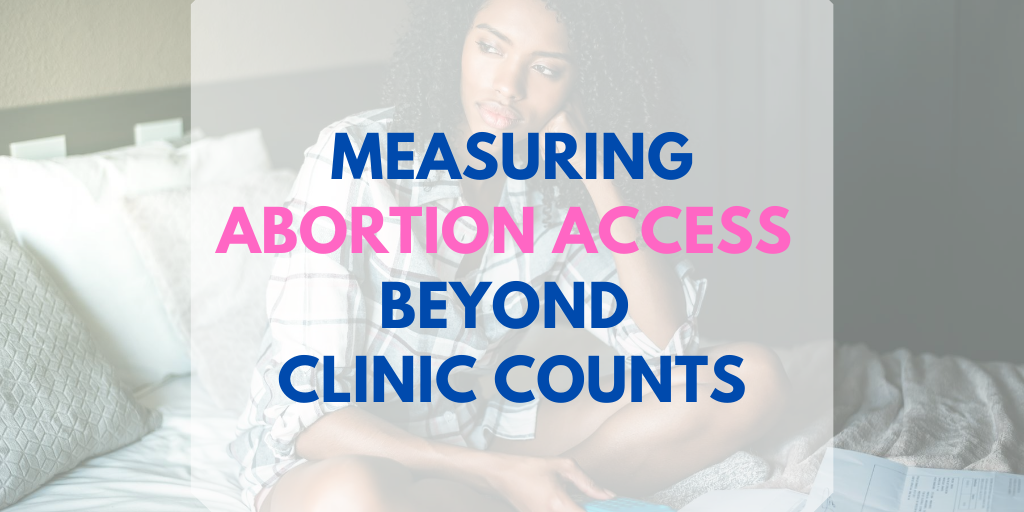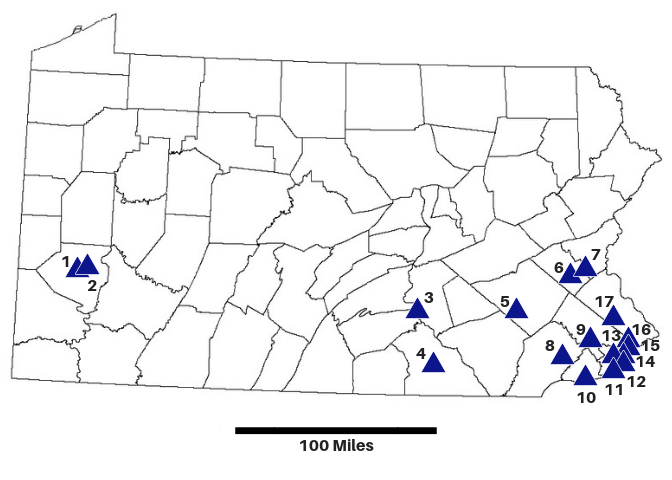
The constant legal battle to keep the doors of abortion providers open for patients can obscure the fact that legal abortion is the bare-minimum starting point for ensuring equitable access to safe, affordable abortion care.
We already know that targeted attacks on abortion care providers have led to fewer clinics, which means a patient’s access to resources—money, time off, transportation, housing, and so on—informs their access to abortion care. After all, the entire point of state-level abortion restrictions is to target lower-income people who cannot overcome the obstacles created by the restrictions.

A map of facilities that provide abortion care in Pennsylvania
A new article in The New England Journal of Medicine provides a framework for measuring abortion access beyond clinic counts.
Experts call it “abortion care churn.”
From the article Care Churn — Why Keeping Clinic Doors Open Isn’t Enough to Ensure Access to Abortion:
“Simply counting closures misses important gauges of care availability, particularly when a major metropolitan area has only one clinic. We believe that more nuanced measures of what we call ‘abortion care churn’ — clinic-level instability of abortion care services and chronic uncertainty about potential closure or changes in services — should be integrated into evaluations of abortion access.”
The study’s authors, Michelle L. McGowan, Ph.D., Alison H. Norris, M.D., Ph.D., and Danielle Bessett, Ph.D., describe five elements that determine real-life access to abortion clinic services beyond open doors.
The elements that make up “a more sensitive calculus” include:
- How many types of care are offered
- Gestational age up to which clinics perform abortions
- The number of days a week a clinic is open
- Cost of services
- Amount of financial aid the clinic can help secure for clients
Any fluctuations in these five dimensions of service delivery compromise patients’ access to abortion care.
How Anti-Abortion Lawmakers Exploit & Harm Constituents
In addition to this five-part framework, authors note the role public perception about the availability of abortion care plays in diminishing access.
If you ever wondered why extremist anti-abortion lawmakers repeatedly introduce blatantly unconstitutional abortion restrictions only to inevitably lose in court, one of the answers is that merely introducing such legislation advances the anti-abortion movement’s multi-faceted disinformation campaign by compromising constituent’s understanding of the status of abortion access.
Last year in Pennsylvania, for example, Rep. Stephanie Borowicz and Sen. Doug Mastriano introduced a six-week abortion ban despite every single court blocking such bills and the Governor’s promise to veto it if it got to his desk.
Lawmakers who exploit the legislative process this way are also exploiting their constituents by forcing us to fund the anti-abortion movement’s disinformation campaign against ourselves.
The Potential Role of “Abortion Care Churn” in Future Litigation
To simplify the balancing test at issue in abortion restriction litigation, courts are typically attempting to weigh the purported benefits of an abortion restriction against the undue burden it will, if implemented, place on people seeking abortion care.
The authors of this study suggest courts could consider the “abortion care churn” framework when charged with weighing the burden of a particular abortion restriction.
For example, a court could use the “abortion care churn” framework to assess real-life access as opposed to simply relying on data such as the number of miles between potential patient’s home and a clinic’s front door while measuring burden.
Courts should also note that lengthy and gratuitous litigation—another explicit goal of the anti-abortion movement—contributes to abortion care churn, meaning it compromises access to abortion even when these cases are celebrated as pro-choice victories.
The Women’s Law Project is a public interest law center in Pennsylvania devoted to advancing and defending the rights of women, girls, and LGBTQ+ people in Pennsylvania and beyond.
August 2020: Our physical offices are still closed due to the pandemic but we are OPEN and working to serve your needs. Contact us here. Sign up for WLP’s Action Alerts. Stay up to date by following us on twitter, Facebook, and Instagram.
We are a non-profit organization. Please consider making a one-time donation or scheduling a monthly contribution.


